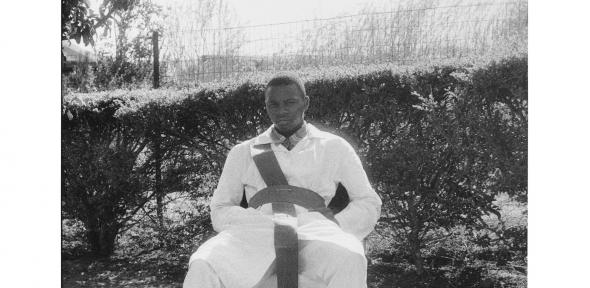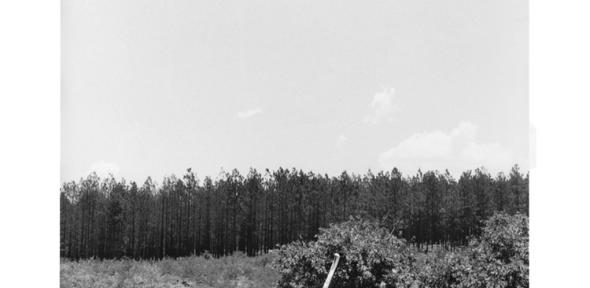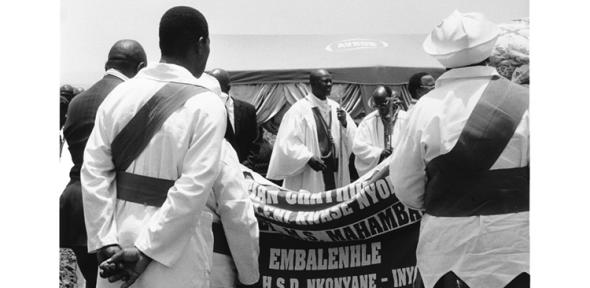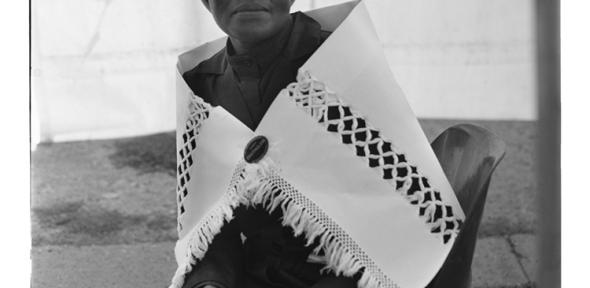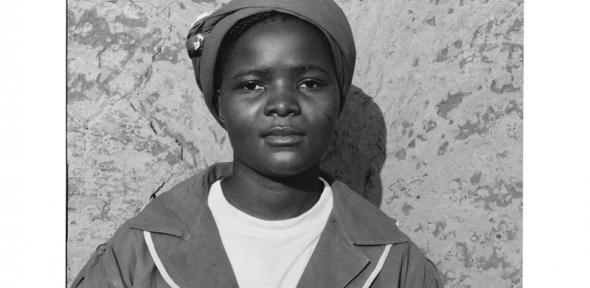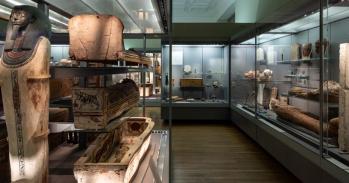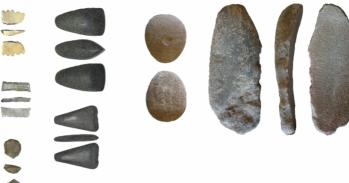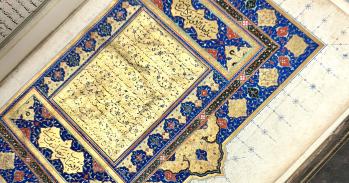
A photography exhibition capturing the black South African Zionist community – the most popular religious denomination in the country – opens at the Museum of Archaeology and Anthropology (MAA) today.
A photography exhibition capturing the black South African Zionist community – the most popular religious denomination in the country – opens at the Museum of Archaeology and Anthropology (MAA) today.
What’s important is the sense of intimacy between me and the church.
Sabelo Mlangeni
Kholwa: The Longing of Belonging showcases the work of South African photographer Sabelo Mlangeni who dreamt up the exhibition during conversations with Joel Cabrita, a researcher from Cambridge’s Faculty of Divinity, who is researching the history of Zionism in South Africa. ‘Kholwa’ means ‘belief’ in isiZulu, one of the most widely spoken languages in South Africa.
Approximately 30 per cent of all South Africans are members of a Zionist church. Zionism (unrelated to Jewish Zionism) is the country’s largest popular religious movement but began life as a 20th century Protestant faith healing movement, originating in the small town of Zion (pop. 24,000), Illinois, in the largely white Midwest of the USA.
Cabrita’s work charts the dramatic shift and 20th century expansion of Christianity and seeks to explain how Zionism travelled across the Atlantic Ocean and became one of the most important influences in black communities more than 8,000 miles away. With approximately 15 million members, it is the largest Christian group in the region.
Mlangeni is a member of the Zionist church and his grounding in the religion can be traced in the intimate and person portraits of church members going on display in Cambridge. He and Cabrita are interested in examining what is at stake when a photographer turns his camera on a religious community they are part of.
Mlangeni said: “The biggest question for me is being part of the community, part of the church. How can I point out other people as being ‘amakholwa’ (‘the believers’) when that is what I myself am? This is a body of work that doesn’t ‘look’ at the Zionist church. It is very important for me to emphasise this, I am not interested in exotifying the church.
“I want to look at people gathering beyond church, and the strong spiritual relationships, which also include me. A long time before even studying photography, I made a lot of work about the church and church members. So my camera was in the church for a long time, church people knew me with a camera. When I look at this work, what’s important is the sense of intimacy between me and the church.”
“For me the most important part of meeting with Joel Cabrita is that it brought something new to me, an understanding of where the Zionists came from, what their beginnings were, where the church was really born [in the USA].”
Some of Mlangeni’s images portray the umlindelo amakholwa (the night vigil of believers). This all-night service forms the cornerstone of Zionist worship across South Africa.
The service consists of long nights of the entire community gathered in longing expectation for the spirit to descend, whether ancestral spirits or the Christian God. Song, prayer, sermons and dance see the believers through the night. Umlindelo amakholwa is the occasion when bonds of solidarity and community are cemented between those who spend the night in expectant waiting. As dawn breaks, the believers make their way home, while some head to a full day of work.
“Zionism was founded in the in the American Midwest in the 1890s and spread to South Africa in 1904 via missionaries and the circulation of faith-healing literature,” said Cabrita. “From the small town of Wakkerstroom, near the village of Driefontein where Sabelo grew up, Zionism spread across the region with migrant labourers returning from Johannesburg’s gold mines. Today, Zionism has adapted to African understandings of the world, with few traces of its North American roots. Southern African Zionists remain committed to the power of prayer to heal bodily illness as their American forebears.”
Working mainly in black and white, Mlangeni’s photographs focus on capturing the intimate, everyday moments of communities in contemporary South Africa. His work includes ‘Big City’ (2002 to 2015) which focuses on Johannesburg’s history, and ‘Country Girls’ (shot between 2003 and 2009), which focuses on gay communities in rural South Africa, especially in the area of Driefontein, his own village in the province of Mpumalanga.
As a childhood friend of many of his subjects, Mlangeni has been able to create photographs from a perspective of unique understanding and membership of the community he is portraying. Throughout his work, Mlangeni avoids ‘othering’ or ‘exoticising’ his subjects, and instead attempts to show the multi-faceted, intimate reality of daily life of these individuals. While many of them face discrimination due to their sexual identities, or are living in precarious socio-economic situations, Mlangeni’s work does not cast his subjects as ‘victims’ but rather portrays their resilience, joyfulness and dignity as ordinary people.
“His photography continually erases and removes the boundaries between observer and subject,” added Cabrita. “Mlangeni is portraying his own belief as much as he is exploring the spiritual commitments of his photographic subjects.
“They chart his own journey towards belong, and longing for belonging within the Zionist community, a journey that has been mediated through a photographer’s lens. While some photographs reveal open, friendly gazes, others confront us with turned backs, inscrutable silhouettes and hidden figures buried deep in pictures, hinting at anonymity, inaccessibility and profound longing.”
Kholwa: The Longing of Belonging – which runs from June 13-September 10 – is free to the public. Visit www.maa.cam.ac.uk for further details and opening times.

The text in this work is licensed under a Creative Commons Attribution 4.0 International License. For image use please see separate credits above.


